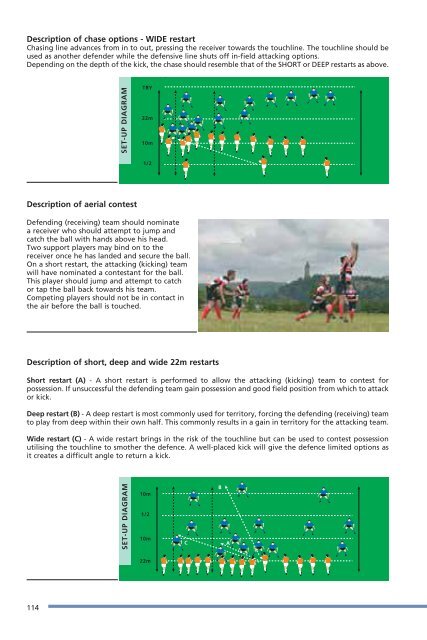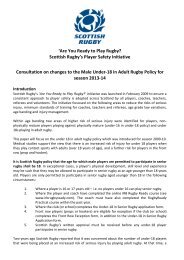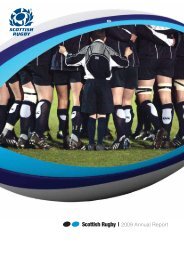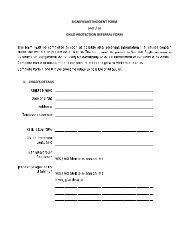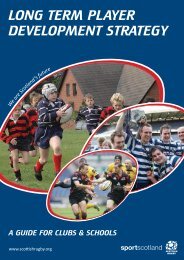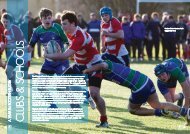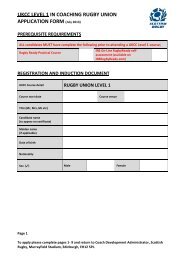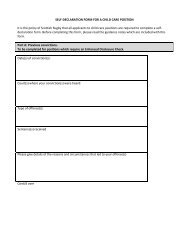LTPDst3cover.qxd (Page 1) - Scottish Rugby Union
LTPDst3cover.qxd (Page 1) - Scottish Rugby Union
LTPDst3cover.qxd (Page 1) - Scottish Rugby Union
- No tags were found...
Create successful ePaper yourself
Turn your PDF publications into a flip-book with our unique Google optimized e-Paper software.
Description of chase options - WIDE restartChasing line advances from in to out, pressing the receiver towards the touchline. The touchline should beused as another defender while the defensive line shuts off in-field attacking options.Depending on the depth of the kick, the chase should resemble that of the SHORT or DEEP restarts as above.pSET-UP DIAGRAMTRY22m10m1/2Description of aerial contestDefending (receiving) team should nominatea receiver who should attempt to jump andcatch the ball with hands above his head.Two support players may bind on to thereceiver once he has landed and secure the ball.On a short restart, the attacking (kicking) teamwill have nominated a contestant for the ball.This player should jump and attempt to catchor tap the ball back towards his team.Competing players should not be in contact inthe air before the ball is touched.Description of short, deep and wide 22m restartsShort restart (A) - A short restart is performed to allow the attacking (kicking) team to contest forpossession. If unsuccessful the defending team gain possession and good field position from which to attackor kick.Deep restart (B) - A deep restart is most commonly used for territory, forcing the defending (receiving) teamto play from deep within their own half. This commonly results in a gain in territory for the attacking team.Wide restart (C) - A wide restart brings in the risk of the touchline but can be used to contest possessionutilising the touchline to smother the defence. A well-placed kick will give the defence limited options asit creates a difficult angle to return a kick.SET-UP DIAGRAM10m1/210mCBA22m114


